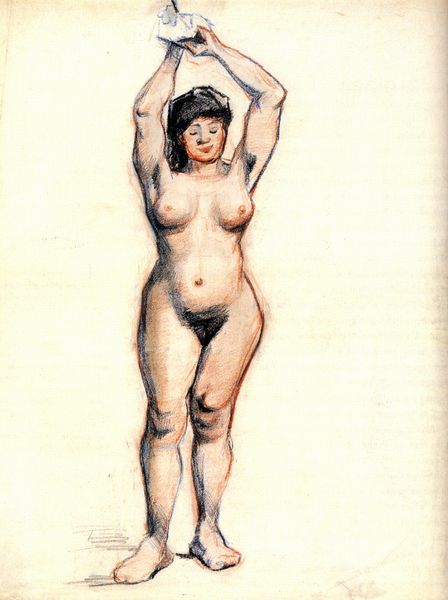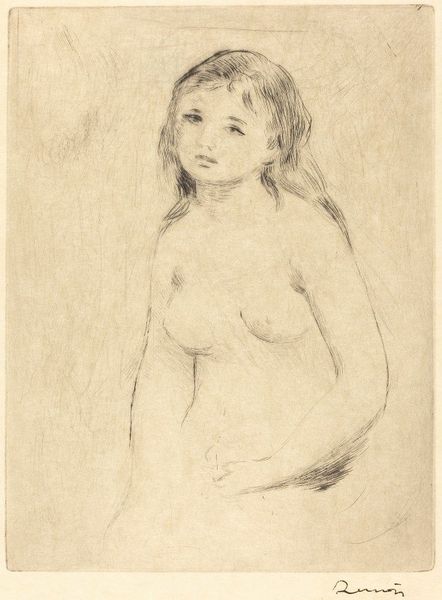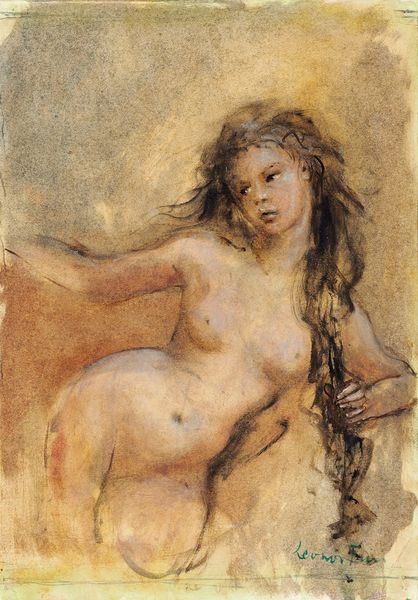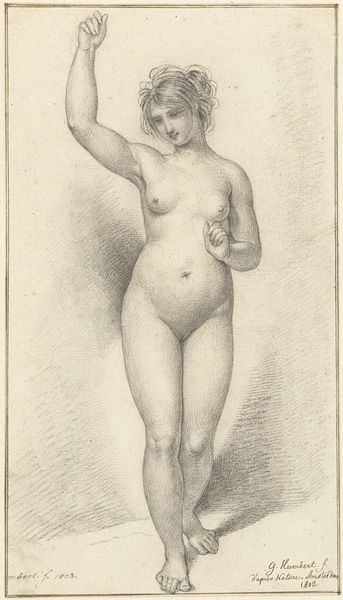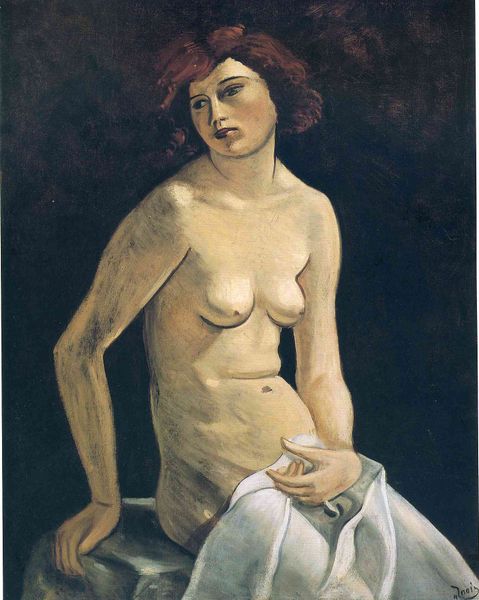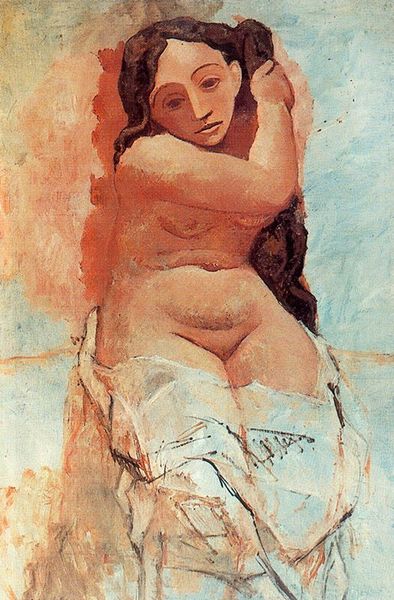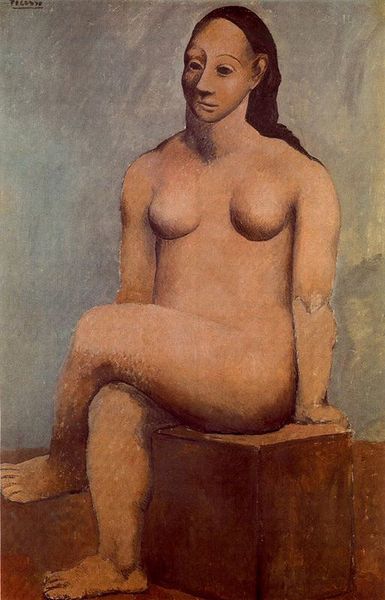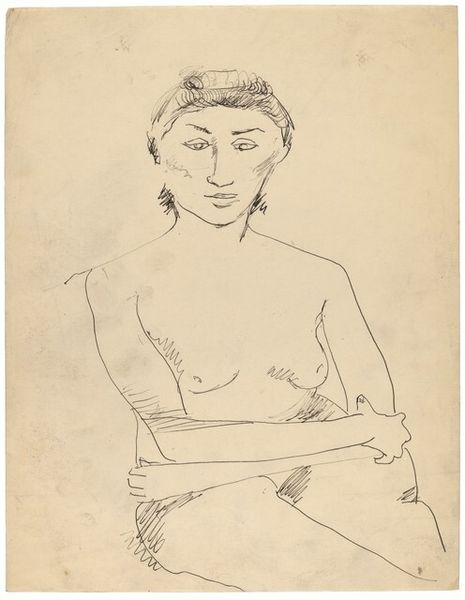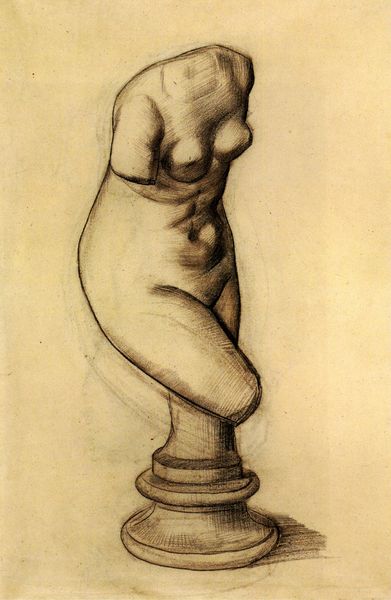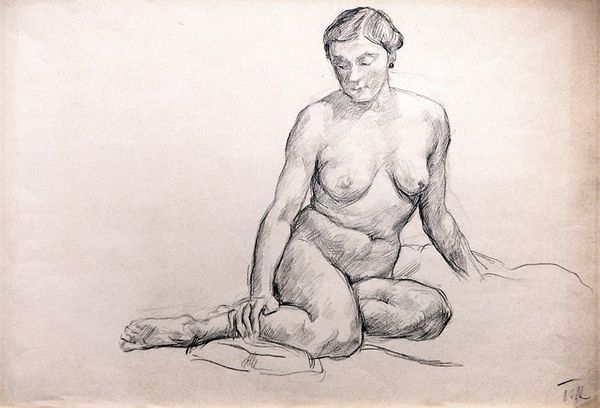
painting, oil-paint
#
portrait
#
painting
#
oil-paint
#
figuration
#
female-nude
#
intimism
#
portrait drawing
#
nude
#
early-renaissance
Dimensions: 95.8 x 75 cm
Copyright: Public domain US
Editor: Here we have Picasso's "Nude with her hands pressed to each other," from 1906, executed in oil paint. It's surprisingly intimate. I’m curious, what elements do you find particularly striking about it? Curator: The striking aspect for me is the historical tension. In 1906, Picasso stands at the cusp of Modernism. Here, we see him grappling with the established academic tradition of the female nude while simultaneously experimenting with a pre-Cubist visual language. How does this interplay influence your interpretation? Editor: I guess I didn't consider the influence of art history. It definitely explains the raw brushwork and unconventional anatomical proportions. Curator: Exactly. Also, consider the cultural context: the burgeoning interest in ethnographic art at the time. Picasso was fascinated by ancient Iberian sculpture. Doesn't the figure's pose, with her hands clasped, recall archaic figures? The image is a record of these various influences, shaping both the composition and public interpretation. Editor: Now that you mention it, yes! I see that connection. And is that why there’s an element of solemnity to it? It feels more... weighty than some nudes. Curator: Perhaps. The way a painting engages with its audience relies upon what socio-political narratives were considered proper at the time, or how it breaks from them. This is not the sexualized female form of much academic painting. Does the ambiguity serve to neutralize or provoke its audience, given the role of the female nude? Editor: This exploration has been fascinating. I never really looked at Picasso in that way before, focusing on the art-historical and cultural influences. It shows how an image, even a nude, participates in so much more than just aesthetic beauty. Curator: Precisely. It is in these complexities where art historical study can really enrich and alter our interpretation.
Comments
No comments
Be the first to comment and join the conversation on the ultimate creative platform.
